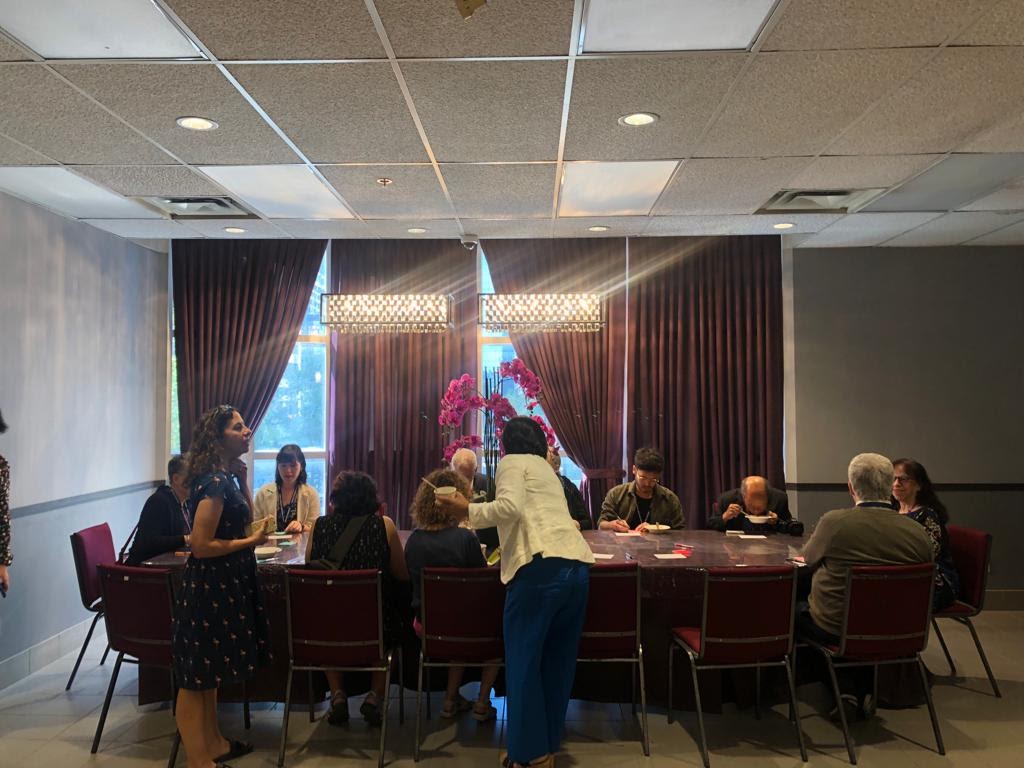
DURIAN SERIES PT. 1-3
The durian fruit has always loomed large in my family’s lore on Malaysia. Growing up in a small town in Ontario, I never heard mention of the musky, infamously odiferous fruit except when my mother was in the presence of other Malaysians—that is, my aunt, her husband and son, or the two other Malaysian families we were friends with. For me, then, the durian came to specifically signify Malaysia in a way that almost nothing else did: not the news, not the Cantonese restaurants we frequented, not our mainland Chinese friends at the Chinese Canadian Association. PT 1: Durian/Facialization. This video diptych (set to Timber Timbre’s “Lay Down in the Tall Grass”) stems from my longstanding obsession with the eyelash curler. A site of racialized difference as well as gendered conceptions of beauty, eyelashes literally frame and (re)shape the seeing apparatus. Taking the eyelash curler’s reframing of vision as its jumping off point, “Durian/Facialization” tarries in the in-between zones of perceptual modes: between sight, smell, sound, and touch as well as liveness and mediation. The video diptych provided a backdrop to my real-time performing body in live performance. Videography credit (durian scenes): AB Brown. PT 2: Lily on Durian. Combining voiceover with the “simple” act of cutting the fruit, this smell performance explores the durian as a metonymy for an elusive diasporic Chinese-Malaysian authenticity. Specifically, I deploy the hard-to-ignore durian aroma as a counterpoint to the relative invisibility of Chinese-Malaysians within the larger narrative of the Chinese diaspora in North America. At the same time, Lily on Durian critically examines the durian’s associations with Malaysian authenticity. Mirroring the difficult process of cutting the durian, my conversation with my mother, Lily, is filled with slips, gaps, parries and misfires in communication. Lily on Durian thus asks the audience to engage with the durian’s smell not as an encounter with a “real” Malaysia (or even a real “Lily”), but as a trace of the desire for realness, recognition, and connection in the first place. PT 3: Have You Eaten Yet? Combining spoken anecdote, snippets of popular song, and even a short language lesson, “Have You Eaten Yet” picks up where Pt. 2 left off: a table full of now-cut durian, a humorously-unproductive conversation between mother and daughter, and a room full of barely-articulated memories. In this taste performance, I prepare the cut durian (frozen and thawed from the earlier performance) for collective consumption alongside of several other biographically and ethno-racially symbolic foods (maple syrup, whipped cream). Ultimately, “Have You Eaten Yet” asks: what are the ethics of eating the other when the line between self and other is not so easily distinguished?
First performed in three distinct parts at the Krause Studio at Northwestern University in Evanston, Illinois as part of the “Performing Sensorium” graduate seminar, April-June 2012. Remounted as “Durian Series Pt. 1-3” at the “In Bodies We Trust” Graduate Student Conference, Northwestern University, April 2013. Excerpted at “Experiments in Attention” Sensorium Salon at the Center for Humanistic Inquiry, Amherst College, April 2017.




FEAST: EATING WITH WINNIE AND SARA (FLUXUS STYLE)
This culinary-based participatory performance combines cooking instructions, food preparation, research notes/questions, and feasting in an immersive environment that aims to make experiential (rather than evaluative) sense of The Chinese-Japanese Cookbook (1914) by sisters Sara Bosse and Winnifred Eaton (credited as Onoto Watanna). Hailed as the first cookbook written by people of Asian descent in North America, The Chinese-Japanese Cookbook is often accused of being “inauthentic.” To this, Feast responds: yes, and? If the recipes contained within the pages of The Chinese-Japanese Cookbook are not authentic, then what are they, exactly? And what better way to find out than to actually cook and taste them? Feast samples two recipes from The Chinese-Japanese Cookbook: “Yea Foo Main” and “Scrambled Eggs (Japanese Style),” which audience members are invited to collaboratively prepare in an ambient environment filled with the sounds of 1914’s popular songbook. Once cooked, we sit down to feast and reflect. Participants are prompted to post their reflections in doodles and words on post-it notes, which document the event. Throughout, recipe cards act as instruction poems, scores for playing, and portals into the past.
First performed at The Chinese Culture Centre in Calgary’s Chinatown as part of the Onoto Watanna’s Cattle at 100 Conference, July 30, 2023.
